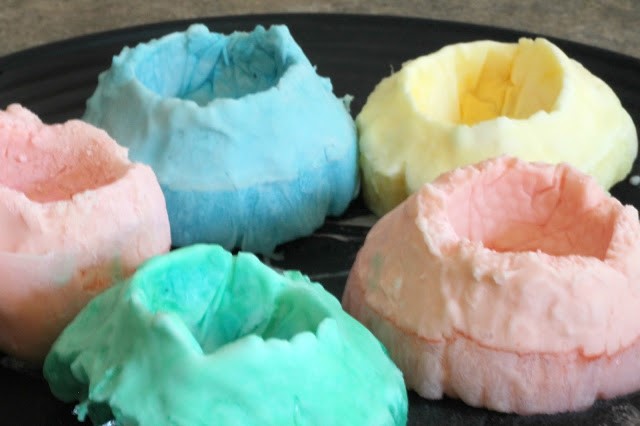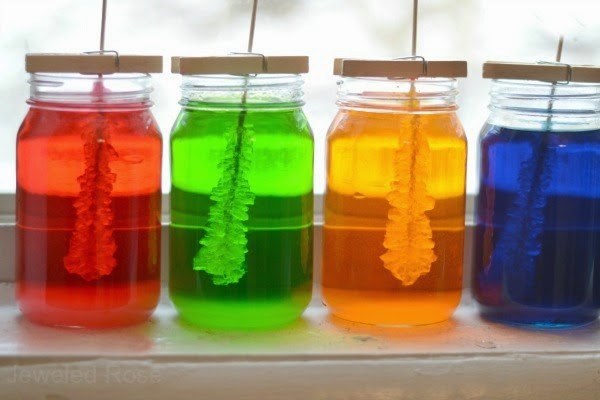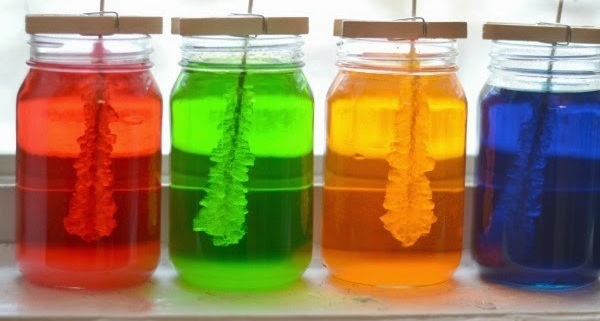Fun Summer Science Experiments For Ages 4-10
Now that summer is in full swing, we don’t have to tell you twice: this season is a hot mess! From water puddles out of the pool and dripping Popsicles, to digging in the garden and gooey marshmallows around the campfire, there’s no shortage of ways to enjoy life to its filthy fullest. The kids are home from school and the days are longer, so it’s the perfect time to get outside with science projects that are both educational and fun.
Learn About Chemical Reactions with…
Ice Volcanoes

What You’ll Need: Baking soda, water, vinegar, food coloring, small bowls, golf balls, and plastic wrap.
Step by Step:
- Place a golf ball into the bottom of a small bowl.
- Place plastic wrap over the top of the ball and over the edge of the bowl.
- Fill the bowls with a third baking soda, two thirds water, covering the ball completely.
- Add food coloring.
- Place in the freezer to solidify.
- Once they’re frozen, thaw them until you can pull the plastic wrap off and pry out the golf ball with a butter knife.
- Add a squirt of vinegar, with a medicine dropper if you have one, to watch them explode.
Why: The volcano is a classic science experiment, but with this version, kids not only love watching the eruption, but also playing with the melting creation. It’s as fun for a 4-year-old as it is for a 10-year old.
Tips: Use skin-safe bath bomb soap dye to avoid staining little hands. You can do this activity along with reading the National Geographic book on volcanoes to make it more educational for older kids.
Learn About Super Saturation with…
DIY Rock Candy

What You’ll Need: A wood skewer, glass jar, large saucepan, clothespins, 3 cups of sugar, 1 cup of water, food coloring, and candy flavoring. (To scale up and make a variety of colors, you can use 30 cups of sugar and 10 cups of water, keeping a 3:1 ratio per jar.)
Step by Step:
- Combine equal parts sugar and water into a saucepan over low, heating until all sugar dissolves.
- Slowly add more sugar, stirring until the water looks cloudy and no more sugar will dissolve.
- Add candy flavoring if desired, heating to a low simmer.
- Remove the sugar-water from the heat and cool completely.
- Dip skewers into water and roll them in sugar. You may need to cut long skewers to fit the jar.
- Pour the cooled sugar-water into the jars, using one jar for each color of rock candy.
- Place a dried stick into each jar, using a horizontal clothespin to hold the stick in the middle.
- You should note growth after one day. Wait about a week for a sizable candy worthy of eating.
- Let the candies dry on a clean, cool surface before devouring.
Why: We’d be lying if we didn’t confess the best part of this experiment is eating the candy! Edible science is pretty exciting for empowered kids big and small. In this case, you’ll see how an overabundance of solute (a.k.a. the sugar) is unable to dissolve into liquid. Over time, the liquid water evaporates, leaving behind a super-saturated solution, with seed crystals forming and molecules expanding. A finished piece of rock candy has about a quadrillion molecules in it, which is pretty mind-boggling!
Tips: It is imperative that the sugar skewers have completely dried in order for the crystals to grow off it and not dissolve in the water. It is also important to make sure the sticks do not touch the bottom or sides of the jar, hence the clothespin. You can grow your rock candy longer than a week if desired.
Learn About Density and Polarity with…
A Homemade Lava Lamp

What You’ll Need: A bottle, vegetable oil, water, food coloring, and Alka-Seltzer.
Step by Step:
- Fill three-quarters of the bottle with vegetable oil.
- Fill the rest with water, which will sink to the bottom.
- Add a few drops of food coloring, which will also sink to the bottom.
- Break an Alka-seltzer tablet into a few small pieces and add them to the bottle one at a time.
- As the reaction slows, add more Alka-seltzer.
Why: Kids love the mesmerizing activity of lava lamps, and it’s even cooler to make one. The lava lamp works using two scientific principles – density and polarity. Density, the measure of mass over volume, is evident once you add the tightly-packed water molecules to the mix. Polarity prevents the oil and water from mixing together. two hydrogen atoms side of a water molecule is positively charged, while the oxygen end is negatively charged. Like a magnet, the positive end of a water molecule will connect with the negative end of other molecules – except that oil molecules are non-polar, lacking a positive OR negative charge. For this reason, oil and water do not mix.
Tips: If you don’t have Alka-seltzer, you can also try filling a jar with water and adding 1/3 cup vegetable oil, food coloring, and kosher salt.
If you want your children to develop a healthy interest in science early-on, but don’t necessarily want the mess at your house, you can sign up for one of Shine’s classes, workshops, summer camps, or parties. We incorporate science, art, education, and fun into an unforgettable, interactive experience your kids won’t soon forget. Contact us for details on programs we’re running in NYC and the Hamptons.



